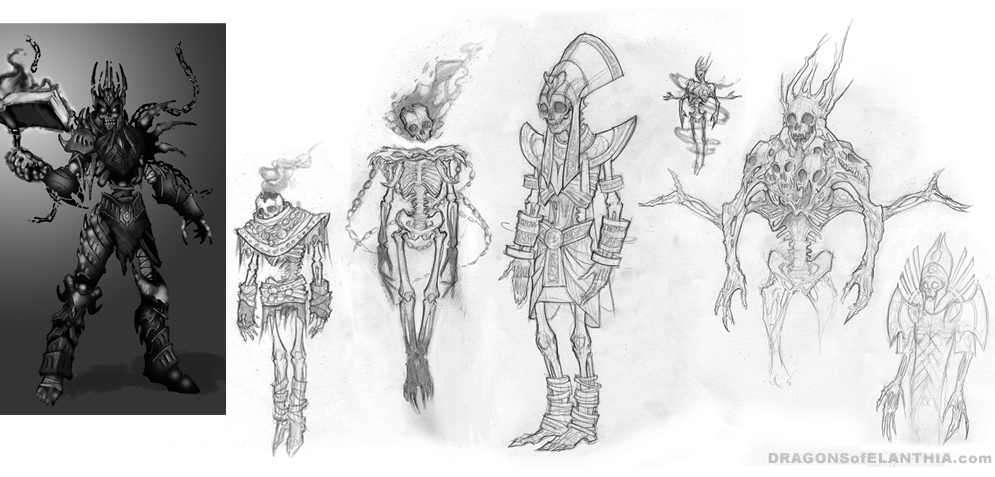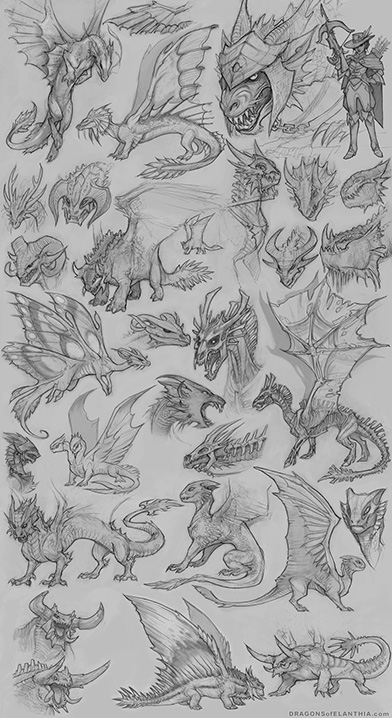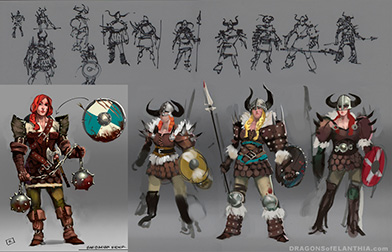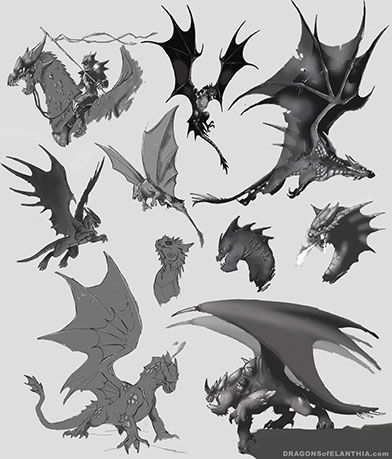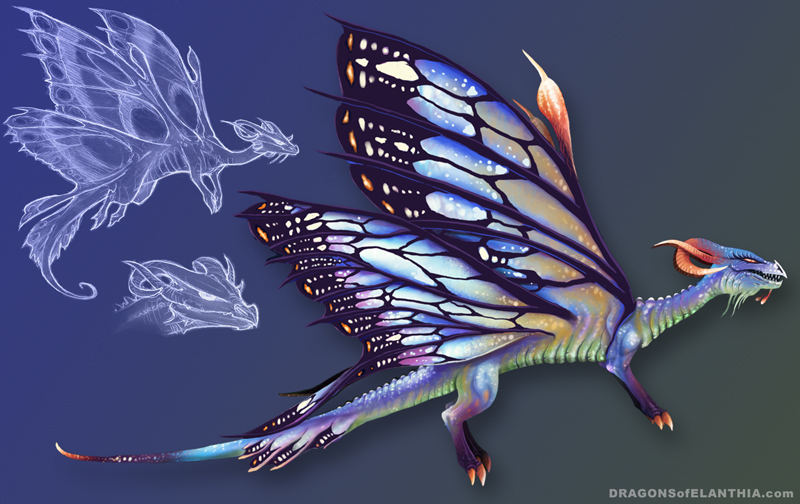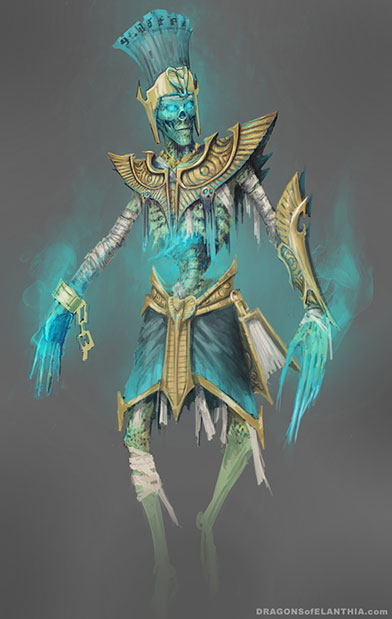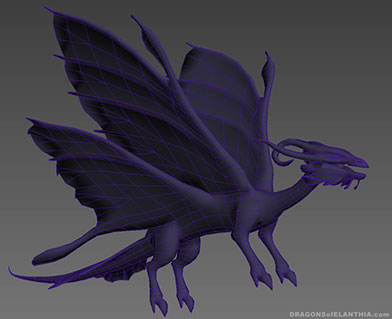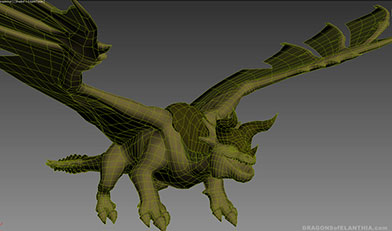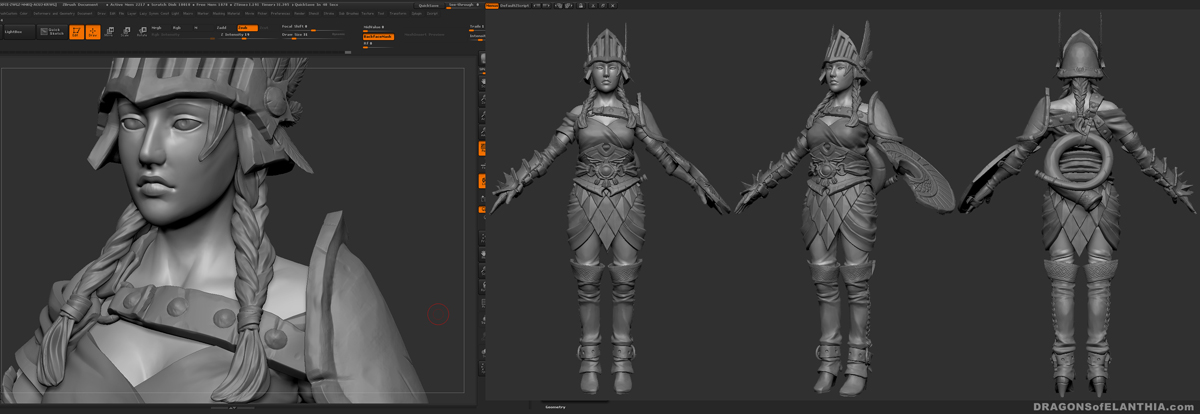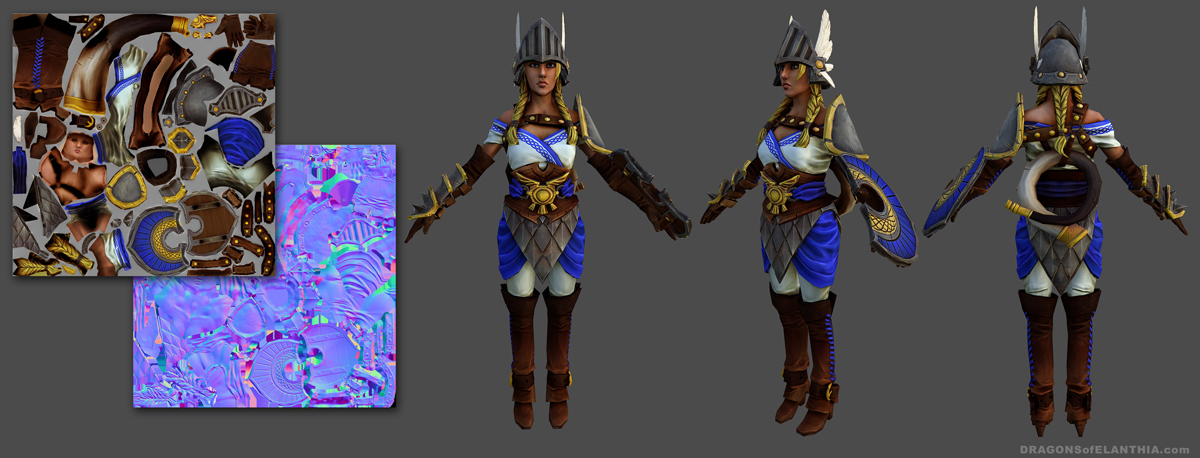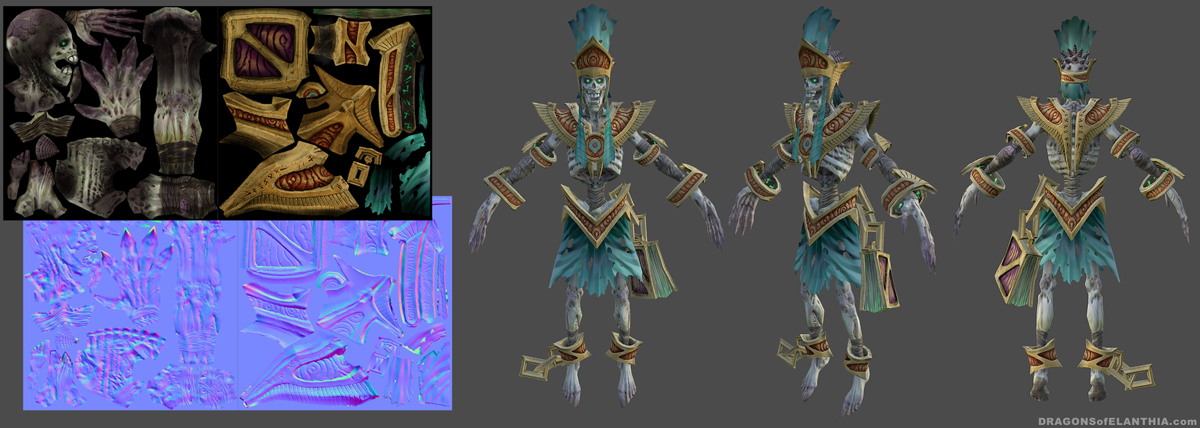While developing Dragons of Elanthia, we’ve established a system for building riders and dragons that’s efficient, highly collaborative, and takes optimal advantage of the creative strengths of all involved. In other words, we have the artistic freedom to build almost anything our dragon-loving hearts desire, we’re always excited to make more, and everyone gets in on it because it’s hella fun.
Here’s a breakdown of our process.
Concept Phase
The creation of a new dragon or rider begins with a design meeting. These are rather animated affairs—essentially a no-holds-barred brainstorming session where designers, programmers, and artists toss ideas around, no matter how outlandish. When we realize that we’re laughing more than discussing, we wrap it up and artists scatter back to their workstations to start putting the standout ideas to paper. The results are sketch compilations that get the ball rolling on tangible construction.
From there, we discuss the design further, whittle it down, make numerous revisions, and ultimately arrive at a solid two-dimensional visual target we’re satisfied with.
Next, we start adding an extra dimension.
White Box Model
The first 3D version of each of our characters is a ‘white box’ model, sort of a low-detail rough draft. Rigged to a basic animation skeleton, this model serves as a stand-in for the eventual finished product so that we can experiment with it. Then we start working out any technical issues with its design, and begin creating the animations, abilities and special effects it will need to incinerate, impale, infect, detonate or otherwise mangle its adversaries. The white box also frequently serves as a template for a high detail sculpted model.
High Resolution Model
Using ZBrush, we finally get down to sculpting the finer contours of the character—muscle creases, whiskers, fur patterns, armor rivets, and dragon scales—with somewhere between 20 and 50 million polygons to accommodate all of the detail.
Texture
From these models, we then bake out normal maps, light maps, and ambient occlusion maps to project onto the comparatively low resolution game models (typically 3,000 – 12,000 polygons), so that without sacrificing game performance, they appear to be rife with the same level of detail as the high resolution sculpture.
With the final addition of a diffuse texture map, painted with Adobe Photoshop, we have our finished game model.
Rigging and Animation
At this stage, we breathe some life into our monstrosities by affixing them to their skeletal rigs and animating them. Every dragon and rider requires a unique set of animations fine-tuned to their specific anatomies, abilities, and temperament. In the game engine, these animations are wired together to enable characters to perform some complex, high-speed acrobatics.
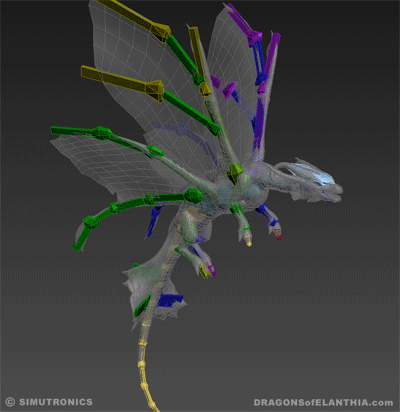
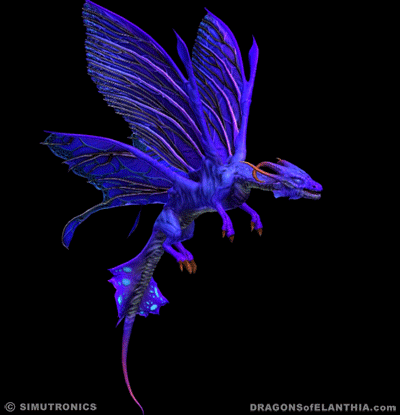
The Fairie Dragon in motion, with and without its underlying animation skeleton
Effects
Each ability that a dragon or rider has must be visualized within the game world. All of our effects are built in the Unity game engine, but since all abilities and effects are unique, the process for creating each is different every time.
For volumetric effects like smoke, flames and magic auras, we use particle systems.
Some effects require procedurally generated meshes like bolts of lightning. To achieve just the right look, unique, custom shaders are often applied as well.
The development of these effects begins early in the design process and takes place alongside the production of models, textures, and animations. We test and tweak them continually to assure they are providing proper feedback to players and adding an appropriately powerful spark to gameplay.
Finally, with the models, textures, animations and effects in place, dragons and riders are ready to do battle! Oh, and there’s a whole lot of code, but that’s another day’s update.




